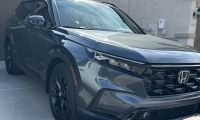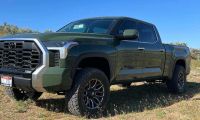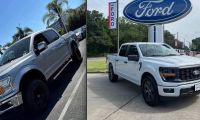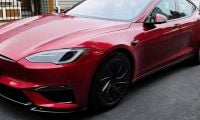Norway has been conducting extensive range and efficiency tests in cold climates for years, something that worries many potential EV buyers who live in regions with the harshest winters.
This year's test has been the most extensive to date, with 29 different models of electric vehicles from many different new and legacy brands. The tests were carried out in this loop between Oslo and Hjerkinn at temperatures between -5ºC and -10ºC. Oslo is the capital city in Norway, and Hjerkinn is a village in the municipality of Dovre in Innlandet county, in the eastern part of the country. The village is located in the Dovrefjell mountains, about 30 kilometres (19 mi) northeast of Dombås and about 25 kilometres (16 mi) northwest of the village of Folldal. It is one of the driest places in the country.
After not being sold in Europe for nearly two years following a design refresh, the Model S joined the winter range test, and performed phenomenally well. In the end only the Tesla Model S remained, which also stopped once its batteries run out of energy; and it was the only model to exceed the 450 and 500 km marks in the endurance race. Lastly, it also surpassed the 2021 record, when the Tesla Model 3 LR Dual Motor stopped at 521 km.
The new record is now 530 kilometers: the Tesla Model S won the prize this year. Finishing with 530km, just 16.40% below its advertised WLTP range of 634km, the Model S is the only vehicle on the list to actually exceed 450km. The car started with a slight disadvantage; due to a technical problem, the battery could not be charged to more than 98% SOC. This is much better than most other vehicles tested, whose range was affected by 20-30% in the cold.
It is also worth mentioning that this occurred on a day when the vast majority of cars in fact stopped ahead of schedule; a typical Norwegian winter (indeed very harsh as per USA standards) considerably reduces range. But these nuances were widely expected, of course: temperatures oscillated between five and ten degrees (Celsius) below zero. But some EV models made it further up the mountain ranges and reported, unofficially, a temperature of minus nineteen (Celsius); so this is an area in which the Tesla Model S also performed very well.
The Hongqi E-HS9, has the second largest deviation (as compared to the WLTP cycle), with almost 35%. This car also had the biggest drift in the 2022 summer test; but the prototype, with a bigger battery, fared way better this time.
NEWS: @Tesla Model S LR sets new record for winter distance in most comprehensive test ever in Norway. Model S did a whopping 530km up form 521km, while second place was Mercedes EQE 300 with 409km #ExtendingTheLeadershipPosition https://t.co/9RYpJk40fq
— Adam Berg (@AdamBerg4680) February 1, 2023
The biggest deviation is that of the Toyota bZ4X -here in a two-wheel drive version-, with more than 35% (again, es per WLTP). Behind these two are the Skoda Enyaq Coupé RS and the Mercedes EQE 300. At the other end of the scale is the Maxus: the deviation there was minus 10.45 %.
This is an amazing piece of news to showcase how resilient the electric vehicles can be in cold climates, and how Tesla is extending its dominance in this sector with the Tesla Model S. This new record has made it clear that its cars are designed to perform in every condition, and this test has definitely proved it.
All images courtesy of Tesla Inc.
Nico Caballero is the VP of Finance of Cogency Power, specializing in solar energy. He also holds a Diploma in Electric Cars from Delft University of Technology in the Netherlands, and enjoys doing research about Tesla and EV batteries. He can be reached at @NicoTorqueNews on Twitter. Nico covers Tesla and electric vehicle latest happenings at Torque News.












